On this date William Neilson Edward Hall of Nova Scotia, was in a desperate battle advancing a heavy 24-pounder naval gun amidst the deadly hail of musket balls, smoke and the mayhem of battle in India against Sepoy rebels.
For his courageous action, he would be the third Canadian, first Canadian sailor, and first Black man to be awarded the Victoria Cross, the British Empire’s highest award for valour and one of the most prestigious medals in the world.
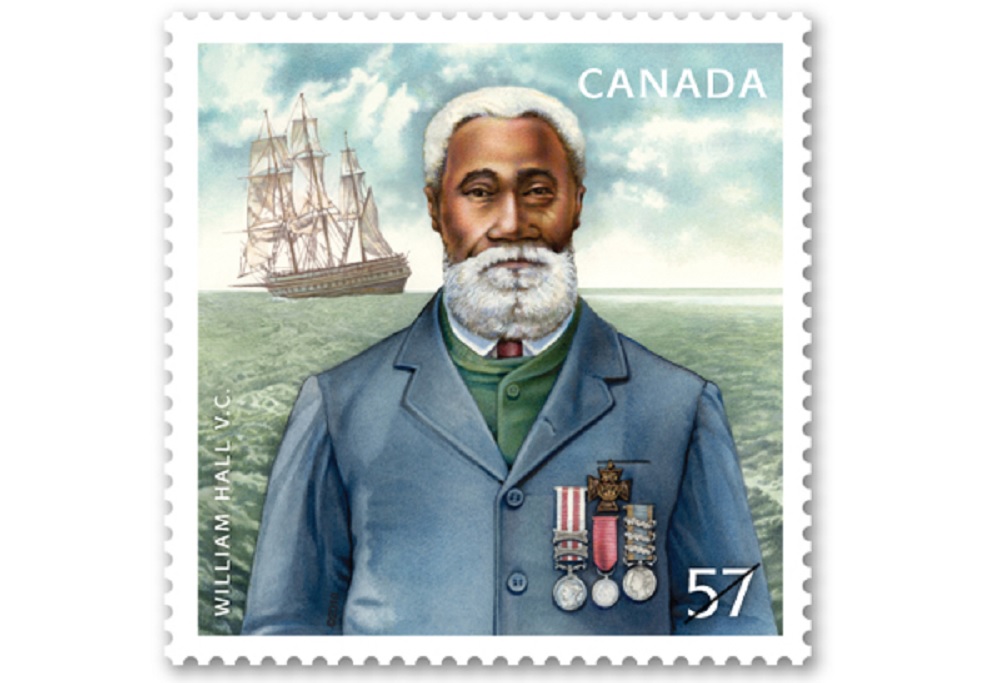
In 2010 Canada Post honoured William Hall with a stamp showing his image with the Victoria Cross and other medals. They are now on display in the Nova Scotia Museum in Halifax ( Canada Post)
The Sepoy Rebellion, Indian Mutiny, or First War of Independence, had begun some years earlier as Indians of all religions began to resent the British, and the British East India Company control in the country. There was a rising undercurrent of perceived interference and effort to suppress their culture and religion.
Indian troops serving the British were known as sepoys. A spark ignited the resentment when it was rumoured that the pre-packaged cartridges for the newly introduced Enfield rifles were coated with tallow from beef and pig fat. The cartridge paper had to be torn off with the teeth but contact with the animal fat was forbidden to Hindi (and Muslim) soldiers by their religion. When some refused to use the cartridge they were shackled and imprisoned. This harsh treatment infuriated others who shot their British officers at the Meerut base and marched to Delhi where the sepoy garrison there joined the revolt which in turn then quickly spread throughout northern India including Lucknow.
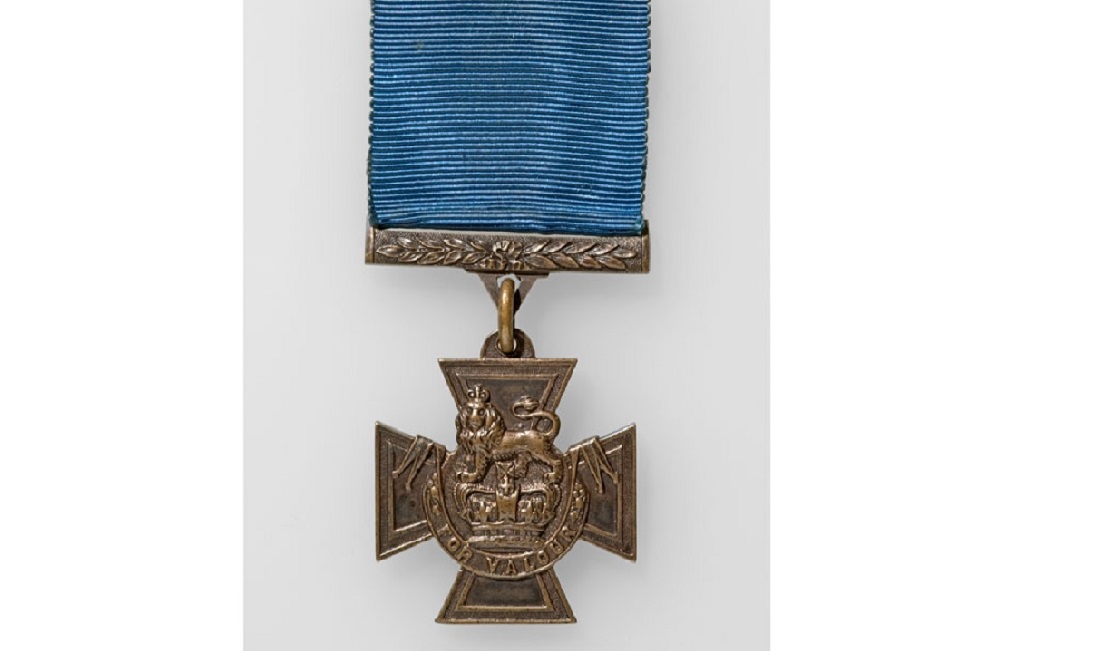
William Hall’s Victoria Cross with Blue ribbon to signify ‘navy” Red ribbons were for the army but since 1920 all V.C. had a crimson ribbon. ( Maritime Museum of the Atlantic)
The Royal Navy and HMS Shannon were sent to offer relief to the British in the Lucknow Residency, a fortified structure now holding British troops and the area’s women and children for safety and which was besieged by rebels. Fighting first through Cawnpore and the massacre of innocents there, Hall volunteered as a member of one of the four gun crews sent to dislodge the rebels from their stronghold at the huge ShahNajaff mosque in Lucknow, surrounded as most compounds were, by thick walls.
Starting at 400 yards the 24pdrs were not having the desired effect to breach the walls for an infantry attack and were ordered closer. Amid the hail of musket balls and grenades the crew of the other guns began falling. Around the remaining gun Hall’s crew were either killed or wounded until only Hall and an officer remained as they continued to load and fire the gun from exceedingly close range.
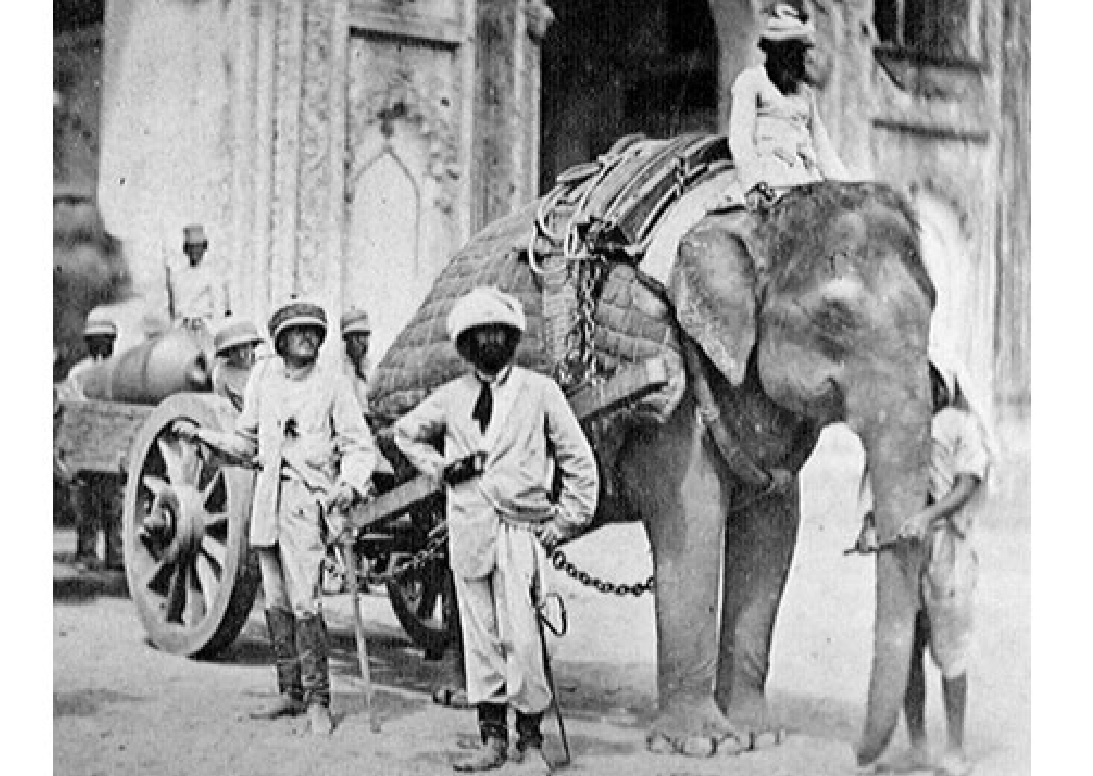
Elephant pulling a 24-dr naval gun mounted on an artillery platform.. Elephants were used to haul the guns of the relief force in the long overland haul. Many of the magnificent structures in the region were very heavily damaged or destroyed by cannon fire by both sides ( Merepix.com rare photos of Indian Rebellion)
Much later Hall was quoted saying, “I remember, that after each round we ran our gun forward, until at last my gun’s crew were actually in danger of being hurt by splinters of brick and stone torn by the round shot from the walls we were bombarding.”
The wall was breached and the infantry moved in. Soon after the Residency was relieved and the remaining Europeans evacuated. The ‘mutiny’ was finally ended in 1859 and resulted in a number of changes on the part of the British to include Indians in bureaucracy and governing.
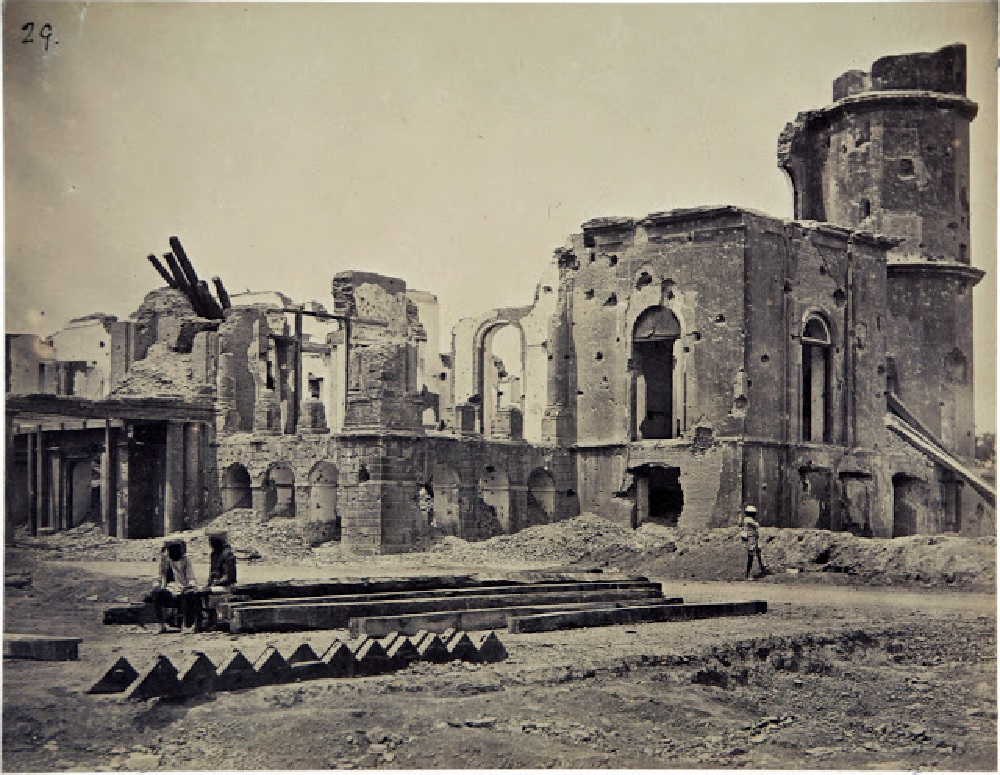
Aftermath of the Siege of Lucknow. The ruins of the Temporary Officers Mess at the British Residency in Lucknow. The large ground of the British Residency became the last British point of defence in Lucknow and was besieged by Indian rebel forces from 2 July 1857 until its evacuation on 19 November. The posed figure on the far right stands in front of the room where the Chief Commissioner of Awadh, Sir Henry Lawrence was fatally wounded by shellfire on 2 July 1857 after organising the defence of Lucknow The British regained control of the city in March 1858 Merepix.com- rare photos of Indian mutiny)
Hall’s citation Lieutenant (now Commander) Young, late Gunnery Officer of Her Majesty’s ship ‘Shannon,’ and William Hall, ‘Captain of the Foretop,’ of that Vessel, were recommended by the late Captain Peel for the Victoria Cross, for their gallant conduct at a 24-Pounder Gun, brought up to the angle of the Shah Nujjiff, at Lucknow, on the 16th of November, 1857.” (– Victoria Cross citation, The London Gazette, 1 February 1859.)
Now Petty Officer First Class, Hall would retire from the Royal Navy in 1876, returning to farm in Nova Scotia in relative obscurity.
He died in 1904 and was buried in an unmarked grave in Lockhart. In 1954 after a long campaign to have his efforts recognized, he was reburied at the Hantsport Baptist Church where in 1956 the local Royal Canadian Legion erected a cairn in his honour with a large replica of the Victoria Cross and plaque describing his heroism.
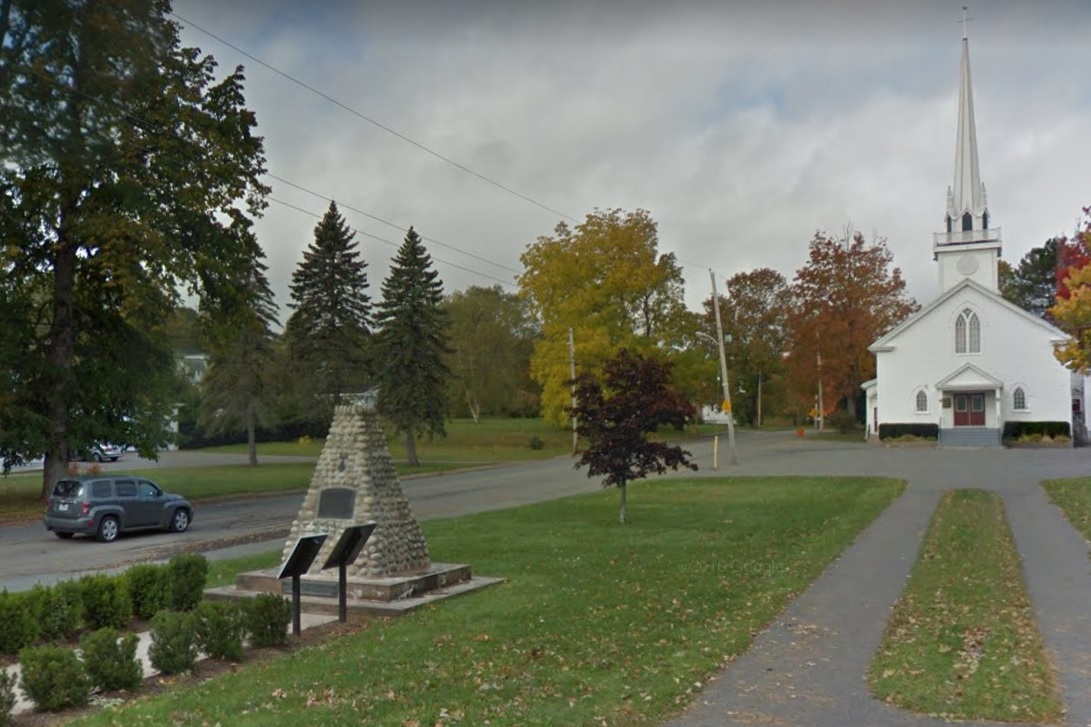
The memorial cairn and plaques explaining William Hall’s heroic acts erected at the Hantsport N.S. Baptist Church. ( Google streetview)
As mentioned, Hall was the third Canadian to receive the Empire’s highest award ( or second depending on action, or date of award), Another Victoria Cross was awarded to Canadian surgeon Herbert Taylor Reade of Perth Ontario. also during the Sepoy revolt. His courageous acts took place just two months prior to Hall’s.
Serving with the 61st Regiment of Foot (Gloucestershire Regt) in Delhi. He was dealing with wounded in the street when a group of rebels gained the rooftops and began firing down into the street. Drawing his sword he led a small party of remaining soldiers and dislodged the rebels. Two days later he led an attack on rebel guns. as was awarded the VC for his actions.
The first Canadian to be awarded the Empire’s most prestigious award for valour was Alexander Roberts Dunn, 21, for his actions with the 11th Hussars in the Charge of the Light Brigade at the Battle of Balaclave in October 1854
Some 99 Canadians have been awarded the Victoria Cross. Since 1993 Canada has introduced its own Canadian Victoria Cross. While there have been 10 recipients of the Military Star of Valour, no Canadian VC has been awarded.. There is a movement to push for its awarding for certain courageous actions in Bosnia and Afghanistan but so far that has not made much headway.
additional information-sources
- Veterans Affairs Canada- Able-Seaman William Hall
- Dictionary of Canadian Biography. Hall, William
- Thought Co.: K Hickman: Apr 3/19: Indian rebellion of 1857- The siege of Lucknow
- Encyclopedia Britannica-T Bunting: Siege of Lucknow
- Encyclopedia Britannica: Indian Mutiny
- Canada Post: William Hall V.C.
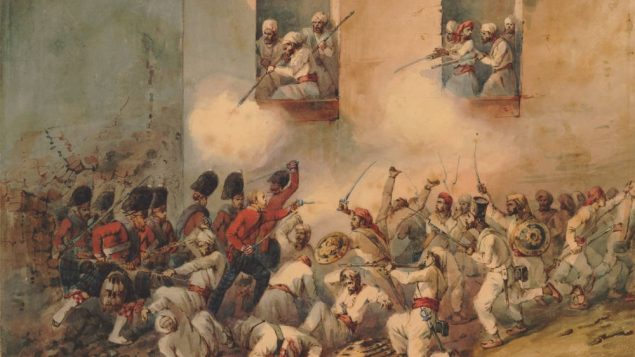






For reasons beyond our control, and for an undetermined period of time, our comment section is now closed. However, our social networks remain open to your contributions.